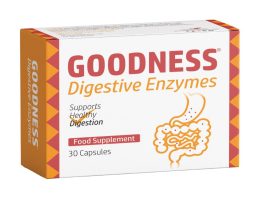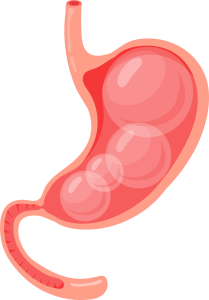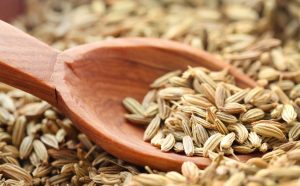Histamine intolerance is an often-overlooked condition that can cause many uncomfortable symptoms, including headaches, digestive issues, hives, and respiratory problems. While histamine is a naturally occurring compound in the body, an excess buildup of histamine, especially from dietary sources, can trigger symptoms in people with histamine intolerance. Managing this condition requires a careful approach to diet and, in many cases, the support of digestive enzymes that help break down histamine in the body.
We’ll explore histamine intolerance, its symptoms and causes, and how digestive enzymes can be crucial in managing it. We’ll also highlight the specific enzymes involved and how Goodness Digestive Enzymes can relieve individuals suffering from histamine intolerance.
What is Histamine Intolerance?
Histamine is a natural compound that plays many important roles in the body, particularly in the immune system, digestion, and the central nervous system. It is released by the body in response to allergens, regulating inflammatory responses and aiding in stomach acid production for digestion. However, histamine can also be ingested through food, especially fermented, aged, or processed foods, which are high in histamine content.
For most people, histamine is quickly broken down and metabolized by two enzymes:
- Diamine oxidase (DAO): The primary enzyme responsible for breaking down histamine in the gut.
- Histamine N-methyltransferase (HNMT): An enzyme that helps break down histamine in tissues.
In people with histamine intolerance, there is an imbalance between the amount of histamine ingested or produced by the body and the ability of these enzymes to break it down. When histamine builds up in the bloodstream or tissues, it can trigger various symptoms, which often resemble allergic reactions. However, histamine intolerance is not an allergy but a metabolic disorder resulting from impaired histamine breakdown.
Symptoms of Histamine Intolerance
Symptoms of histamine intolerance can vary widely between individuals, but common symptoms include:
- Headaches or migraines: Histamine can dilate blood vessels in the brain, leading to headaches or more severe migraines.
- Digestive issues: Diarrhea, bloating, gas, and abdominal cramps are common in people with histamine intolerance due to the role histamine plays in regulating stomach acid.
- Skin reactions: Hives, flushing, and itching are typical skin reactions, often resembling an allergic response.
- Respiratory problems: Congestion, runny nose, and wheezing can occur when histamine builds up in the body.
- Heart palpitations: Some people with histamine intolerance experience an increased heart rate or palpitations.
- Fatigue and anxiety: Histamine can act as a neurotransmitter, and elevated levels can affect mood and energy levels.
Causes of Histamine Intolerance
Several factors can contribute to histamine intolerance, including:
1. Impaired DAO enzyme activity: Some individuals have low levels of DAO, the enzyme responsible for breaking down histamine in the digestive tract. This deficiency can be due to genetic factors or conditions such as inflammatory bowel disease (IBD), celiac disease, or other gastrointestinal disorders.
2. Increased histamine production: Certain foods, particularly fermented, aged, or processed foods like cheese, wine, and cured meats, contain high histamine levels. Consuming these foods can overwhelm the body’s ability to break down histamine, leading to intolerance symptoms.
3. Medications: Some medications, including non-steroidal anti-inflammatory drugs (NSAIDs), antidepressants, and certain antihistamines, can block DAO activity or increase histamine release in the body.
4. Gut health issues: Damaged gut lining or an imbalance in gut bacteria can impair DAO production and increase histamine release, exacerbating symptoms of histamine intolerance.
Managing Histamine Intolerance with Digestive Enzymes
Managing histamine intolerance often involves reducing the intake of high-histamine foods and improving the body’s ability to break down histamine through digestive enzymes. Since the enzyme DAO primarily breaks down histamine in the gut, supplementing with this enzyme can significantly alleviate the symptoms of histamine intolerance.
Here are the key enzymes that can help manage histamine intolerance and how they work:
1. Diamine Oxidase (DAO)
DAO is the primary enzyme that breaks down ingested histamine, particularly in the gastrointestinal tract. It is naturally produced in the gut lining and regulates histamine levels by degrading excess histamine from food before it enters the bloodstream. In individuals with histamine intolerance, DAO production is often impaired or insufficient, leading to histamine buildup.
How DAO Helps: DAO supplements can help break down histamine from food in the digestive system, preventing excess histamine from entering the bloodstream. By reducing histamine levels in the gut, DAO helps alleviate digestive symptoms like diarrhea, bloating, and cramping, as well as skin reactions and headaches that result from histamine overload.
2. Amylase
While amylase is primarily responsible for breaking down carbohydrates, it plays a supportive role in managing histamine intolerance. By improving the digestion of starchy foods, amylase helps prevent undigested food particles from reaching the colon, which can contribute to fermentation and increased histamine production by gut bacteria.
How Amylase Helps: Better carbohydrate digestion reduces gut inflammation and prevents the overproduction of histamine in the gut, indirectly alleviating symptoms of histamine intolerance.
3. Protease
Protease is an enzyme that breaks down proteins into smaller peptides and amino acids. Since high-protein foods, particularly aged or fermented meats, are high in histamine, efficient protein digestion can prevent histamine buildup in the digestive system.
How Protease Helps: Protease supports the breakdown of protein-rich, high-histamine foods, reducing the likelihood of undigested proteins fermenting in the gut and triggering histamine release.
4. Lipase
Lipase aids in the digestion of fats and plays a supporting role in overall digestive health. While it doesn’t directly break down histamine, efficient fat digestion helps reduce digestive burden, allowing the gut to function more smoothly. This may reduce inflammation that can contribute to histamine release.
How Lipase Helps: Lipase helps alleviate digestive discomfort and indirectly reduces stress on the gut, where histamine buildup can occur by ensuring fats are properly digested.
5. Lactase
Some individuals have histamine intolerance that often coexists with lactose intolerance. Lactase, the enzyme that breaks down lactose in dairy products, can help manage symptoms in people with dual sensitivities by reducing fermentation in the gut, which can trigger histamine release.
How Lactase Helps: Lactase ensures proper digestion of dairy products, preventing the fermentation process in the gut that could lead to additional histamine production.
How Goodness Digestive Enzymes Can Help Manage Histamine Intolerance
Goodness Digestive Enzymes offers a carefully formulated blend of enzymes that support the digestion of various food components, including proteins, carbohydrates, and fats. This helps reduce histamine buildup in the gut. While Goodness Digestive Enzymes does not contain DAO, it includes several key enzymes that play a crucial role in maintaining overall digestive health and managing the symptoms of histamine intolerance.
The product’s combination of enzymes like amylase, protease, lipase, and lactase helps optimize digestion. It reduces the amount of undigested food that could lead to fermentation and increased histamine production in the gut. By improving the breakdown of carbohydrates, proteins, and fats, Goodness Digestive Enzymes indirectly reduces the digestive burden that often exacerbates histamine-related symptoms.
For those struggling with histamine intolerance, Goodness Digestive Enzymes can help manage symptoms by:
- Supporting digestive efficiency: Enzymes like amylase, protease, and lipase enhance the digestion of carbohydrates, proteins, and fats, reducing fermentation and subsequent histamine production.
- Reducing inflammation: Improved digestion means less irritation and inflammation in the gut, where histamine release often occurs.
- Supporting gut health: By breaking down food more effectively, these enzymes help maintain a healthier gut environment, preventing excess histamine buildup that can result from gut imbalances or poor digestion.
Conclusion
Histamine intolerance can cause a wide range of uncomfortable and disruptive symptoms, from digestive issues to skin reactions and headaches. While managing histamine intolerance requires dietary adjustments, digestive enzymes can play a crucial role in improving the breakdown of histamine and other food components, reducing symptoms. Goodness Digestive Enzymes provides a comprehensive enzyme blend that enhances overall digestion, alleviating some of the burdens on the gut that can contribute to histamine buildup. Although it does not contain DAO, the enzyme directly responsible for histamine breakdown, the product’s ability to support efficient digestion can help manage histamine intolerance symptoms, improving the quality of life for those affected by this condition.
-
Product on sale
 Goodness Digestive EnzymesOriginal price was: $ 29.95.$ 25.95Current price is: $ 25.95.
Goodness Digestive EnzymesOriginal price was: $ 29.95.$ 25.95Current price is: $ 25.95.






